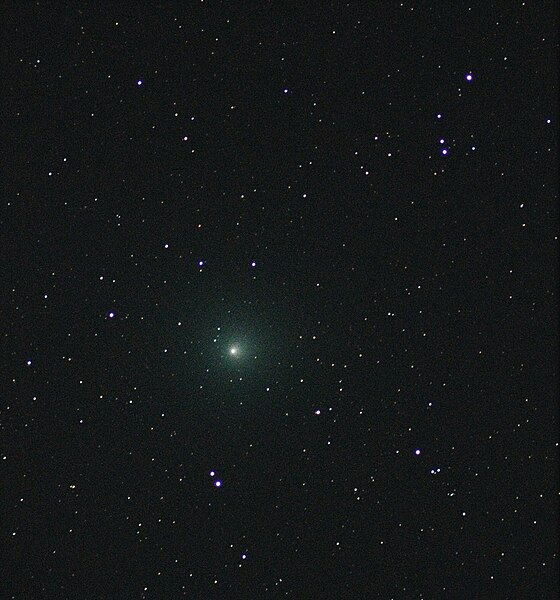46P/Wirtanen is a small short-period comet with a current orbital period of 5.4 years. It was the original target for close investigation by the Rosetta spacecraft, planned by the European Space Agency, but an inability to meet the launch window caused Rosetta to be sent to 67P/Churyumov–Gerasimenko instead. It belongs to the Jupiter family of comets, all of which have aphelia between 5 and 6 AU. Its diameter is estimated at 1.4 kilometres (0.9 mi). In December 2019, astronomers reported capturing an outburst of the comet in substantial detail by the TESS space telescope.
Comet 46P/Wirtanen photographed in the southern hemisphere, from Balcarce, Argentina.
In December 2018, comet 46P/Wirtanen passed within 11.6 million kilometres of the Earth.
Rosetta was a space probe built by the European Space Agency launched on 2 March 2004. Along with Philae, its lander module, Rosetta performed a detailed study of comet 67P/Churyumov–Gerasimenko (67P). During its journey to the comet, the spacecraft performed flybys of Earth, Mars, and the asteroids 21 Lutetia and 2867 Šteins. It was launched as the third cornerstone mission of the ESA's Horizon 2000 programme, after SOHO / Cluster and XMM-Newton.
Illustration of Rosetta and Philae at the comet
Trajectory of the Rosetta space probe
Rosetta's signal received at ESOC in Darmstadt, Germany, on 20 January 2014
Earth from Rosetta during final flyby






